| |
Test
RTDS supports TTCN-3
international standard testing language including syntax and semantic verification, simulation, code generation, debug, and graphical traces. A video introduction to TTCN-3 is available here.
 The formal models can be simulated against their related test suites.
The implementation of the model can be tested against the implementation of the test suites.
Traces and breakpoints can be set within the model or within the test suites and stepping
is available on both sides because the bug might be in the model or in the test suite.
A 10 minutes on-line demonstration is available here.
The formal models can be simulated against their related test suites.
The implementation of the model can be tested against the implementation of the test suites.
Traces and breakpoints can be set within the model or within the test suites and stepping
is available on both sides because the bug might be in the model or in the test suite.
A 10 minutes on-line demonstration is available here.
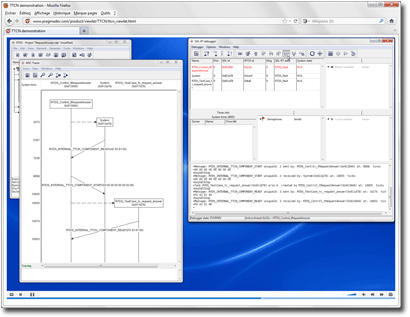
A simple TTCN example flash demonstration
Sample test suite
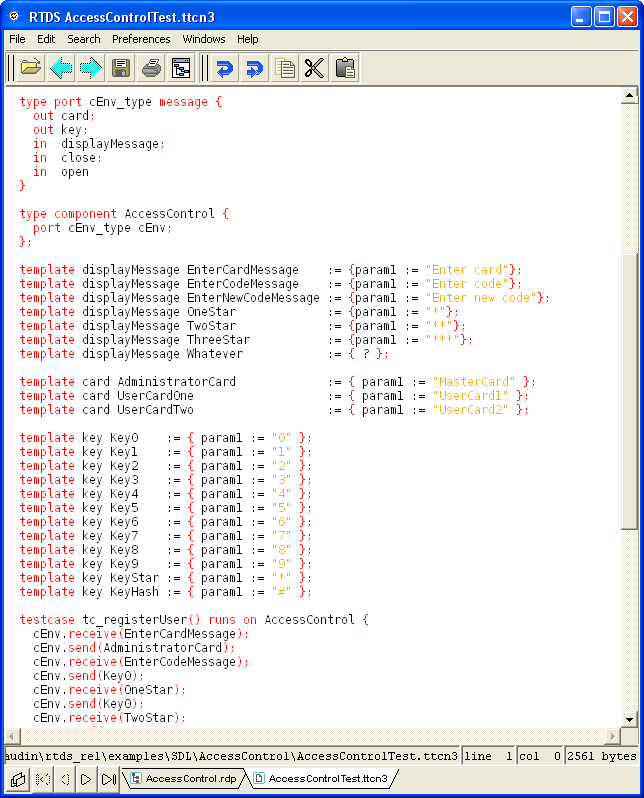
A TTCN-3 example test suite
The test verdict is displayed in the debugger window and in the graphical execution trace window.
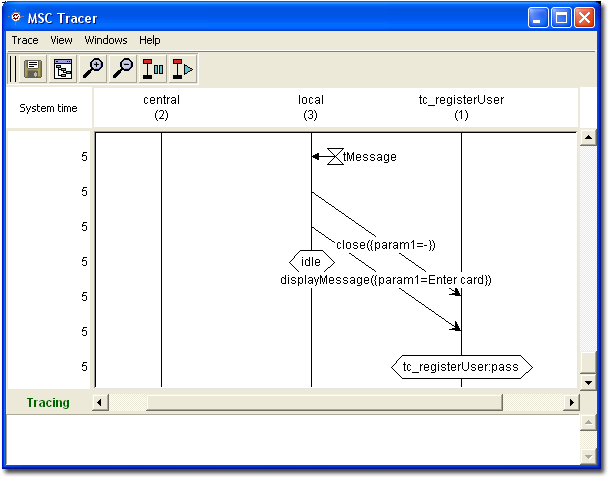
Test verdict in an execution trace
Easy implementation
The generated code architecture makes integration on target easy and straight forward.
Macros are used for messages going out of the test case, and a chained list of message queues is used for incoming messages.
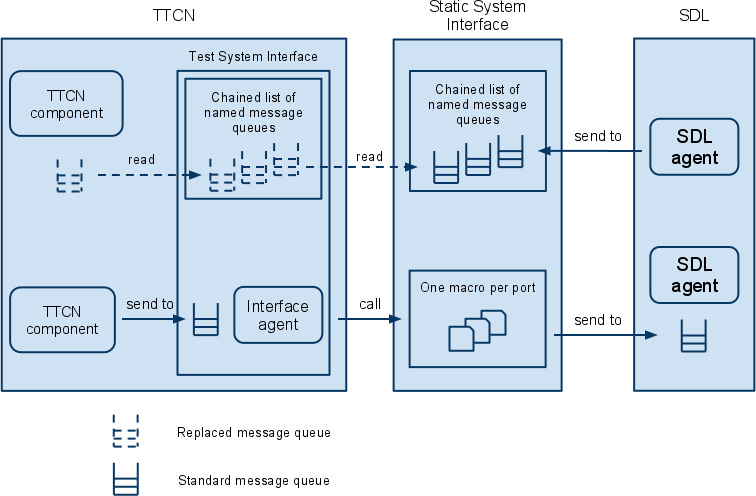
Easy integration on target
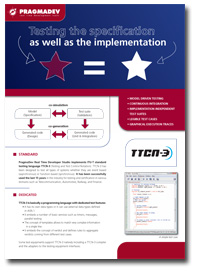
Click here to get the brochure
|
|
Model Based Testing
As a result of the PragmaList common lab PragmaDev has set up with French National Nuclear Research Center CEA List, RTDS offers automatic generation of test cases from a model with the following criteria:
- Coverage: generate the minimum number of test cases that will cover all transitions in the model.
- Transition: generate a test case that will cover a specific SDL transition.
- Property: generate a test case that fulfils a static property (process state, variable value,...).
- Observer: generate the test cases verifying a dynamic property (succession of action or temporal rules). A dynamic property is defined as a state machine called observer.
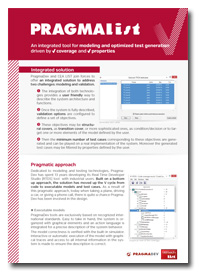
Click here to get the brochure
Continuous integration
TTCN-3 test suites can be used to test the model or its implementation on target.
Automatic testing can be executed on whole or a part of the model or its implementation.
TTCN-3 can be used for unit testing, integration testing, validation testing.
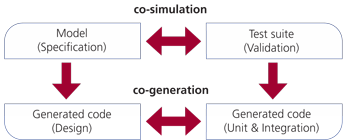
Continuous integration
Model driven testing
Test cases can be generated automatically out of:
- Requirements,
- Execution traces,
- An executable model of the system via our third party model checking technology.
The on-line demonstration below will show how to generate test cases out of requirements:
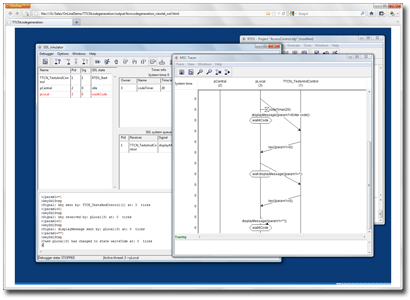
TTCN-3 automatic generation out of MSCs
Model coverage
At any time during a test session it is possible to view graphically the model coverage at
any architecture level. You can see how many times a transition has been fired, how many times a state has been reached,
and how many times a symbol has been executed.
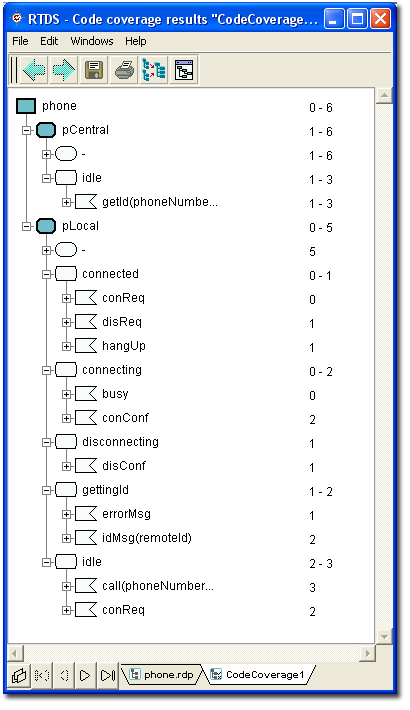
Code coverage
|
|



